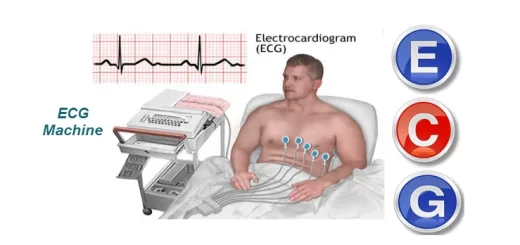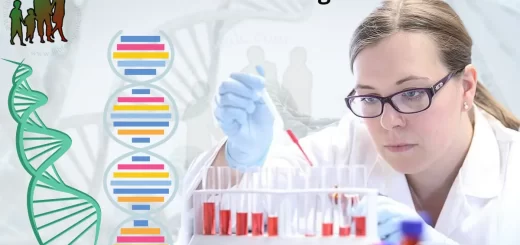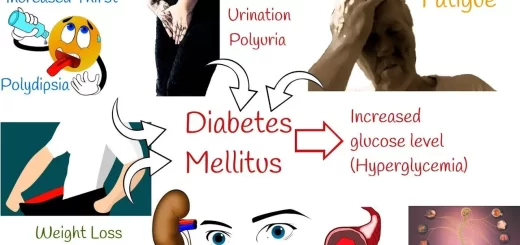Histology of respiratory portion, Alveolar epithelium, Interalveolar septum and Fetal lung
The respiratory system is the network of organs and tissues that help you breathe, It helps your body absorb oxygen from the air so your organs can work, It cleans waste gases, such as carbon dioxide, from your blood, It includes your airways, lungs, and blood vessels, It suffers from common problems include allergies, diseases or infections.
Histology of respiratory portion
Respiratory portion of the lung includes the following parts:
- Respiratory bronchioles: The bifurcations of the terminal bronchioles give rise to the respiratory bronchioles. They are lined by cuboidal ciliated epithelium with Clara cells where the cilia gradually disappear. The alveoli arise from their walls as very thin saccular out pocketings, where gas exchange can take place.
- Alveolar ducts: They are elongated branching passages arising from the distal ends of the respiratory bronchioles. Their walls are lined by simple squamous epithelium and surrounded by thin lamina propria containing elastic, reticular, and smooth muscle fibers.
- Alveolar sacs: They arise from the distal ends of the alveolar ducts where a cluster of alveoli opens into each alveolar sac.
- Alveoli: The alveoli are the structural and functional units in which gaseous exchange between inspired air and blood takes place. They are minute air spaces that open into the respiratory bronchiole, alveolar ducts, and alveolar sacs. The alveoli are responsible for the spongy structure of the lungs.
Alveolar epithelium
It consists of 2 types of alveolar cells lining the alveolar surface:
a- Type I pneumocytes:
- They cover approximately 95% of the alveolar surface.
- They are thin squamous cells with extremely flat nuclei.
- They are attached to one another and to type il pneumocytes by occluding Junctions.
- They form the alveolar side of the blood-air barrier, where their basal lamina is fused with the basal lamina of the nearby capillary endothelial cells.
b- Type II pneumocytes:
- They cover approximately 5% of the alveolar surface.
- They are cuboidal cells that bulge into the air space and they are attached to the adjacent type I cells by occluding junctions.
- They have rounded nuclei with short microvilli on their free surface. Their cytoplasm contains membrane-bounded secretory granules called lamellar bodies. These granules are released by exocytosis to form the pulmonary surfactant.
- In addition to the secretion of surfactants, type II pneumocytes are progenitor cells for type I alveolar cells.
The interalveolar septum
It is the thin connective tissue layer that surrounds and separates the alveoli from one another. It is traversed by the alveolar pores that allow collateral respiration if a small airway passage becomes obstructed.
The interalveolar septum contains:
- An extensive capillary network and is supported by elastic and reticular fibers.
- Interstitial fibroblasts: they secrete collagen fibers, elastic fibers, and the extracellular matrix of the pulmonary interstitium.
- Alveolar macrophages: they migrate from the blood monocytes (members of the mononuclear phagocyte system) that can be found in the interalveolar septa and in the air spaces of the alveoli. They have an irregular nucleus, and vacuolated cytoplasm with a large number of lysosomes. They engulf any inhaled dust or bacteria that escape the mucous blanket of the respiratory epithelium. Alveolar macrophages are propelled by the ciliary action where they are coughed in the sputum and known as dust cells.
Clinical hint: In heart failure, the alveolar macrophages phagocytose RBCs which are extravasated into the alveoli from the congested pulmonary capillaries. Here the macrophages contain hemosiderin pigment granules inside their cytoplasm and are known as heart failure cells.
The alveolar-capillary barrier (blood-air barrier):
It is the thin portion of the interalveolar septum, where air the alveoli is separated from capillary blood by:
- A layer of surfactant.
- Type I pneumocytes.
- Fused basal laminae of type I pneumocytes and endothelial cells of the capillaries.
- Endothelial cells of the pulmonary continuous capillaries.
Fetal lung
During intrauterine life, the lungs have no function. Histologically, the fetal lung has the following features:
- It has a gland-like appearance with prominent lobulation due to its thick interlobular septa.
- The alveoli and the alveolar ducts are lined by cuboidal epithelium and are collapsed.
- The bronchi and bronchioles are folded.
- The pulmonary blood vessels are congested and appear filled with blood.
Respiratory system function, organs, structure, anatomy and conducting portion
Mechanics of ventilation, Structures of Respiratory system and Functions of conducting zone
Diaphragm anatomy, structure, function, Phrenic nerves and Nerves of the thorax
Lung structure, borders, Lobes, Fissures and Broncho-pulmonary segments
Larynx structure, function, cartilages, muscles, blood supply and vocal folds
Trachea, Major Bronchi, Thoracic cavity structure, function and anatomy



